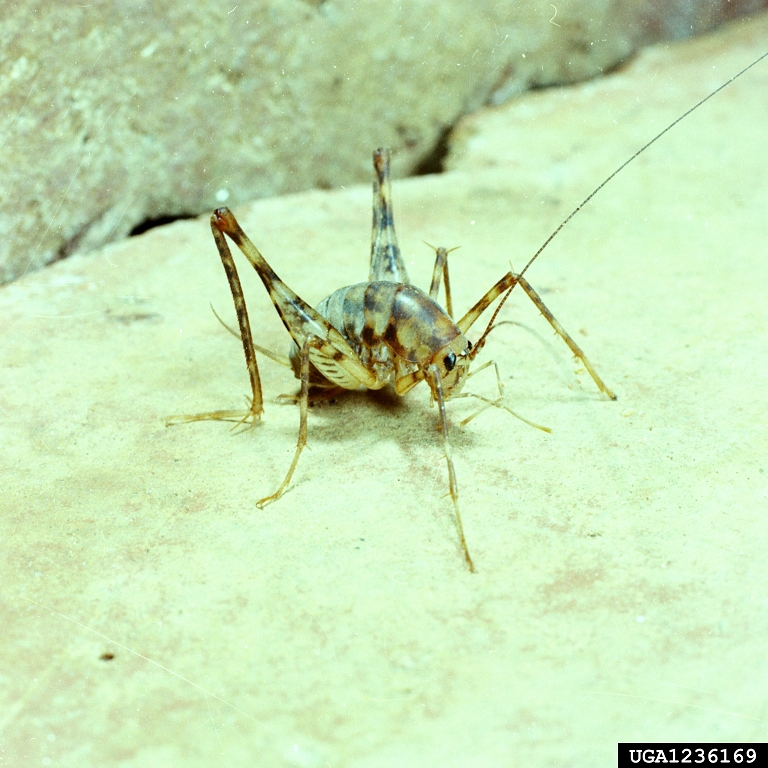Camel crickets, also known as cave crickets or spider crickets live in dark damp places of the home or garage. They are related to grasshoppers, locusts, and other crickets (insect order Orthoptera) and are six legged as opposed to spiders that have eight legs. Fully grown adults range in size from 1-2 inches long, while the nymphs, the immature stages, have the same body type at a smaller scale, and no wings.

Camel crickets are strong jumpers, thanks to their long hind legs, and do not have wings. Camel crickets do not bite and their chewing mouthparts gnaw on just about anything, including fabrics, wood, cardboard, plants, and other bugs.
Camel crickets are often seen in eastern and Midwest states. These pests dislike the cold damp and tend to make their way indoors when the weather is hot and dry in the summer and fall months. They can breed in your house if the conditions are right, and may be seen any time of year. They will feed on fungi, wood, cardboard, fabrics, and other spider crickets.
Prevention and eradication of spider crickets is to keep them out of your home in the first place. Basements and crawl spaces are popular hangouts for them. Seal around entry doors and basement windows and ground-level doors with weather stripping. Dehumidifiers make room air less damp. Toss away old cardboard boxes and newspapers will also help.
Sticky insect traps are available at home stores. You can make your own from a few loops of duct tape. Place these where walls and floors intersect in basements and attached garages. Shallow bowls of soapy water also make effective traps. Camel crickets will fall in the bowl and drown. The key method of managing these household pests is to reduce the moisture inside your home. They are attracted to water and high humidity.
Use a shop vacuum to suck them up and empty it out immediately. Otherwise, they will crawl out and re-infest your home.

 Posted in
Posted in 
